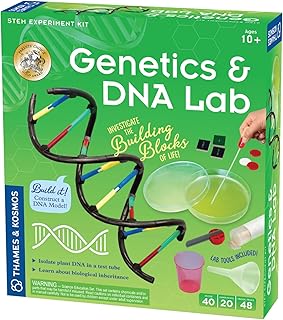Summary of "شرح التعبير الجيني وعملية النسخ والترجمة (بالعربي) - Gene Expression, Transcription and Translation"
Summary of the Video
“شرح التعبير الجيني وعملية النسخ والترجمة (بالعربي) - Gene Expression, Transcription and Translation“
Main Ideas and Concepts
Introduction to Gene Expression
Gene expression is the process by which a gene’s information is used to produce a visible genetic trait, such as eye color, hair color, or height. The video explains how genes—segments of DNA—“express” themselves to manifest these traits.
Biological Hierarchy
The human body is organized as follows: - Cells → Tissues → Organs → Systems → Body Inside each cell are organelles, including the nucleus, which contains DNA.
DNA Structure and Genes
DNA is a double helix composed of two strands twisted around each other. It consists of four nucleotide bases: - Adenine (A) - Thymine (T) - Guanine (G) - Cytosine (C)
Segments of DNA that code for traits are called genes.
Central Dogma of Molecular Biology
Gene expression involves two main processes: 1. Transcription (النسخ) – rewriting the DNA code into messenger RNA (mRNA). 2. Translation (الترجمة) – converting the mRNA code into a protein that expresses the genetic trait.
Transcription Process
- Occurs inside the nucleus.
- The enzyme RNA polymerase attaches to the DNA strand at the gene region.
- DNA strands separate, and RNA polymerase synthesizes a complementary mRNA strand by matching RNA nucleotides to the DNA template:
- A pairs with U (in RNA)
- T pairs with A
- G pairs with C
- C pairs with G
- The mRNA carries the genetic message out of the nucleus to the cytoplasm.
mRNA Processing
- The initial mRNA contains exons (coding regions) and introns (non-coding regions).
- Introns are removed in a process called splicing, leaving a mature mRNA strand with only exons.
- The mature mRNA contains a start codon (AUG) and stop codons (UAA, UAG, UGA), which signal where translation begins and ends.
Translation Process
- Takes place in the cytoplasm at the ribosome, which has two subunits (large and small).
- Transfer RNA (tRNA) molecules bring amino acids to the ribosome.
- Each set of three mRNA nucleotides (codon) corresponds to a specific amino acid.
- The ribosome reads the mRNA codons, and tRNAs bring amino acids that are linked together to form a polypeptide chain (protein).
- Translation continues until a stop codon is reached, releasing the completed protein.
Outcome
The protein formed through translation expresses the genetic trait encoded by the original gene, such as eye color.
Detailed Methodology / Steps of Gene Expression
-
DNA Structure Understanding - DNA is a double helix with nucleotide bases A, T, G, C. - Genes are specific sequences within DNA coding for traits.
-
Transcription (النسخ) - Location: Nucleus - Enzyme: RNA polymerase - Process:
- DNA strands separate at the gene region.
- RNA polymerase synthesizes mRNA by matching RNA bases to the DNA template (A→U, T→A, G→C, C→G).
- Result: Pre-mRNA strand complementary to the DNA.
-
mRNA Processing (Splicing) - Removal of introns (non-coding regions). - Retention of exons (coding regions). - Formation of mature mRNA with start (AUG) and stop codons.
-
Translation (الترجمة) - Location: Cytoplasm, at the ribosome - Components: Ribosome (large and small subunits), tRNA, amino acids - Process:
- mRNA binds to ribosome.
- tRNA molecules bring amino acids corresponding to mRNA codons.
- Amino acids link together forming a polypeptide chain.
- Translation starts at start codon (AUG) and ends at stop codon (UAA, UAG, UGA).
- Result: Protein that expresses the genetic trait.
-
Protein Function - The protein synthesized is responsible for the physical manifestation of the gene (e.g., eye color).
Key Terms Explained
- Gene Expression: How a gene’s information is used to create a trait.
- DNA (Deoxyribonucleic Acid): The molecule that carries genetic information.
- Gene: A segment of DNA that codes for a specific trait.
- Transcription (النسخ): The process of copying DNA into mRNA.
- Translation (الترجمة): The process of converting mRNA into a protein.
- mRNA (Messenger RNA): The RNA copy of a gene used to make proteins.
- tRNA (Transfer RNA): RNA molecules that bring amino acids to the ribosome during translation.
- Ribosome: The cellular machinery where translation occurs.
- Codon: A sequence of three nucleotides in mRNA that codes for an amino acid.
- Exons: Coding regions of a gene that remain in mRNA after splicing.
- Introns: Non-coding regions removed from pre-mRNA during splicing.
- Start Codon: The codon (AUG) signaling the start of translation.
- Stop Codons: Codons (UAA, UAG, UGA) signaling the end of translation.
Category
Educational
Share this summary
Featured Products




